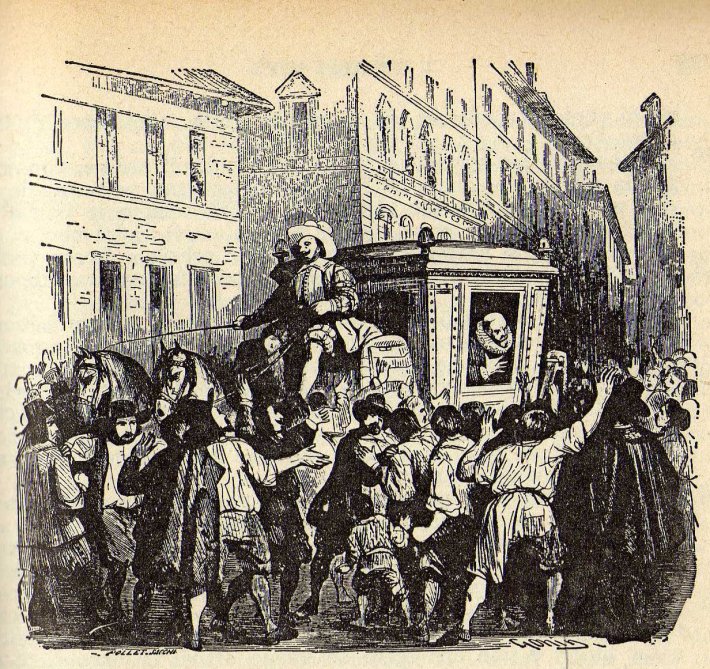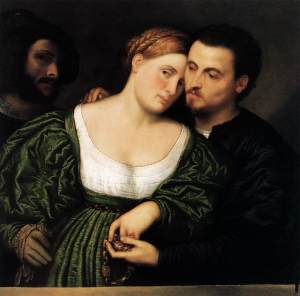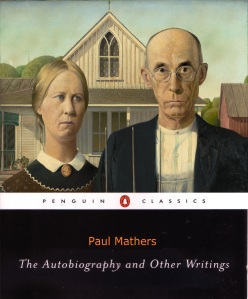I Promessi Sposi by Alessandro Manzoni
In the recent past (albeit not in the memory of anyone currently living) there was a time when Christian art, music, and literature didn’t exclusively suck. In fact, there was a time when they had the market cornered on great art in the Western world. What happened? The world shifted, the church lost relevance, and then, even worse, the church sought to regain relevance. The art of Christianity reflected this embarrassing floundering and mediocrity. I am not going to talk about how the church can regain its past artistic glory, save to point to an example of its past artistic glory.
To wit, I Promessi Sposi is, quite simply, one of the greatest books I have ever read. I know I say that often, but that is because I am reading through the Harvard Classics Library. But I am placing this in the hypothetical “top five” that I hope no one will ever call on me to actually produce (thus undoubtedly revealing that what I thought was a list of five is more like twenty). It is also a work of fiction from a time and from a mind that was fully convinced of the power of Christianity. And it is also one of the keenest descriptions of human behavior ever written. The characters are not simply believable, they are us.
While the Bruce Penman translation is clearly the translation of choice today, I was a little disappointed in the edition. I don’t think people pay nearly as much attention to what I’m reading in public as I am self-conscious about, but when I ordered the Penguin Classics imprint, I ordered I Promessi Sposi with an etching on the cover of Italian priests in the 1600s. What I received was a copy of The Betrothed, which is the title in translation but seemed a dash on the dainty side, especially in light of what they chose for the cover art:
The Venetian Lovers by Bordone, which is a fine work, but also has the added irritant to my inner pedant of being a mid-1500s work of art. Also, this is not a book that takes place anywhere near Venice. It would be as if someone a few hundred years from now put an artwork from within the past 100 years in America on the cover of a book by me, missing the majorly misleading signals sent by misjudging time and place slightly:
As I mentioned, it is a story about human behavior. Last time I spoke about Don Abbondio, but there are also the motivations of the fiery Father Cristoforo, the Don Giovanni-like Don Rodrigo, the cagey and squirrelly nun Gertrude, the story of the Unnamed which is like a dagger in the heart of the reader. As I’ve also mentioned, Manzoni weaves the story through actual history seamlessly. He explains the bread riots and the plague with the same rhetorical skill that he uses to explain Don Abbondio’s motivations for cowardice. He even employs an actual historical figure, Cardinal Federigo Borromeo, as a pivotal character in the story.
But more than this, the author seems to suggest a prescription to the problems of the world by way of example. I am hard pressed to think of a work of fiction that is more thoroughly convinced (and convincing!) of the efficacy of a genuine Christian conversion. The genuinely converted in this book are the forces of good in what would otherwise be an entirely wicked, primal, bestial world. By the end, you want to be Cardinal Borromeo and Father Cristoforo. They are more than heroes. They are hope.
The ending was a bit pat, but I hesitated to even mention that reaction as I know it is just my cynical modern eye passing over a 200 year old work. Having said that, the fitting-ness of the ending does nothing to distract from the satisfying-ness of the ending. This is yet another way in which the book made me think “No, we have it wrong today! Manzoni had it right then!”
I cannot recommend this book highly enough. I am sure that it is still widely read in Italy, but that it is not read more widely in the rest of the world is like willingly giving up vitamin B. For the modern church, it would be like ignoring Michelangelo or C.S. Lewis. It would be like willingly going into a gun battle with a switchblade. It would be any number of other self-crippling foolish metaphors that I could spend the rest of the evening concocting. The Church at large ought to glom on to the great works OF HERS like these. I feel that it could teach the Church some valuable lessons on the proper applications of her belief and the possibility of the truly sublime and earnest expressions of it in the world of the arts. For those who are decidedly outside of the walls of the church, there is a wealth of truth in this book. There are keys on how to combat all of the evils and injustice of this world. There are also keys on how to react, how to find contentment, and, indeed, the meaning of life.
I’ve discovered a review from when the book was new by a certain gentleman you may have heard of, E.A. Poe. Poe positively gushes over the book nearly as shamelessly as I have. In this review he says that the book “promises to be the commencement of a new style in novel writing.” He was correct. You can clearly see, looking at novels before and novels after, the influence it had on no less than Charles Dickens and Victor Hugo. Then take into account how influential those authors have been on subsequent authors to see the scope of the influence of Manzoni.


